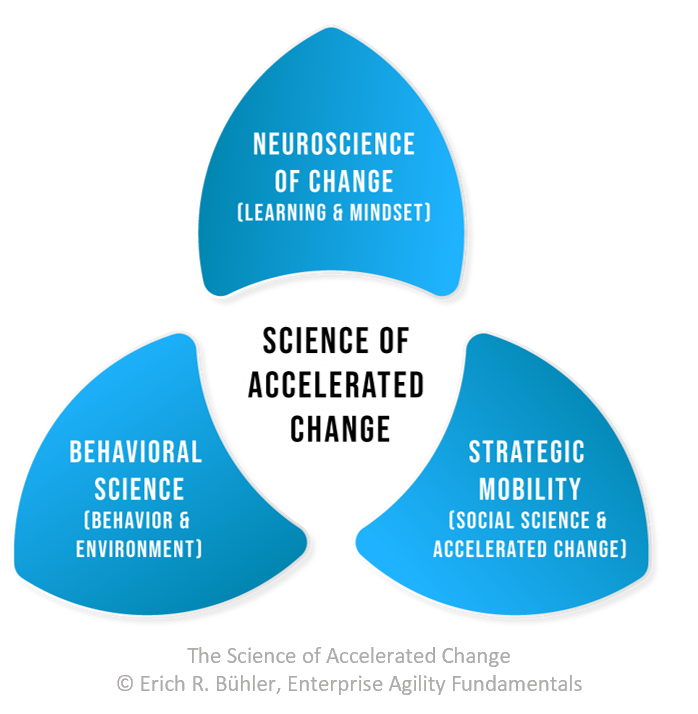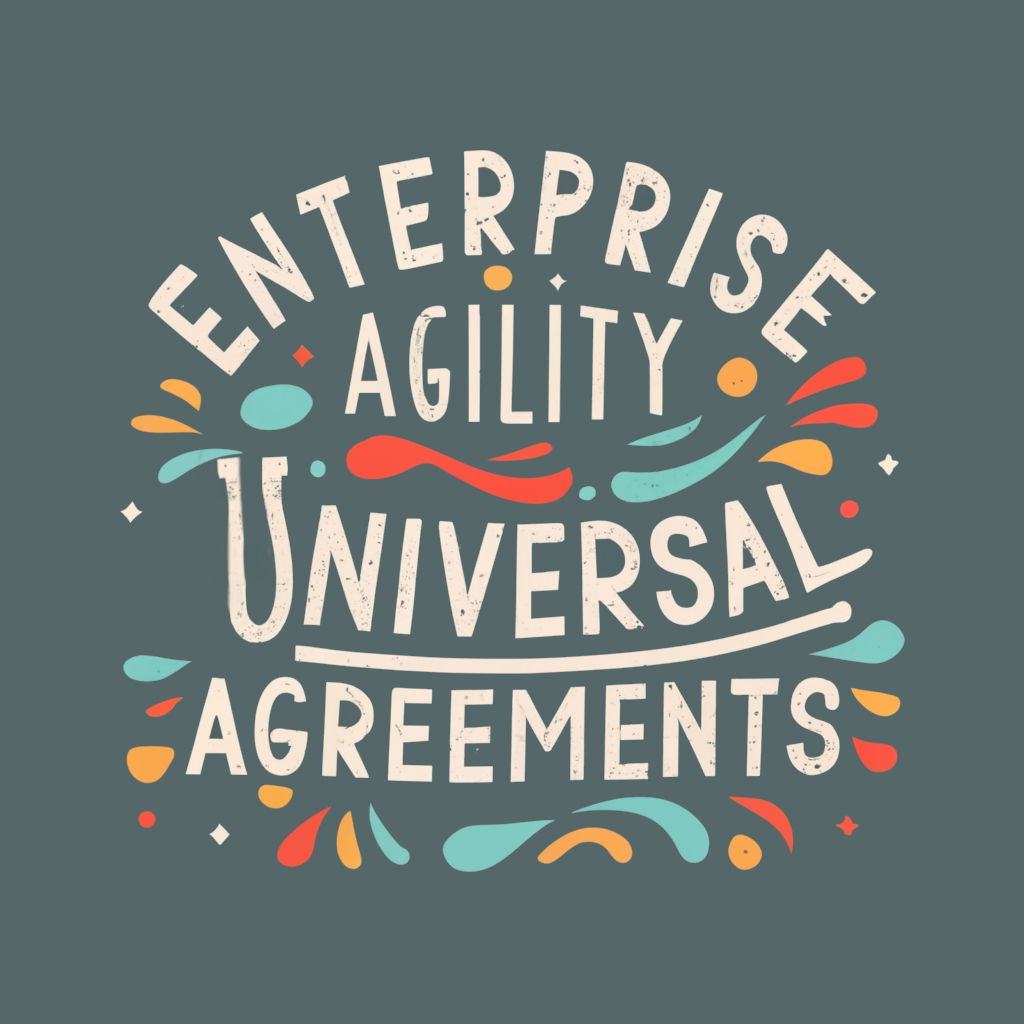Complexity is all around us. Markets, technology, consumer behavior, and competition are becoming more complex daily due to massive market acceleration. Traditional methods of leading organizations are not that effective in dealing with this fast-moving complexity.
Enterprise Agility offers a new perspective and new models for dealing with complexity and empowering others. At its core, Enterprise Agility recognizes that reductionist thinking cannot solve complex business challenges. We can't simply break problems down into smaller pieces and address each separately. We need a more holistic, connected approach. Many concepts on the market address this issue, but they lack three critical areas considered in Enterprise Agility. Some of the key principles of Enterprise Agility for dealing with complexity are:
- Embrace uncertainty: The future is unpredictable. Instead of pretending we can eliminate uncertainty, we must learn to act despite it. Enterprise Agility organizations thrive on change rather than stability. To do this, we use what we call Future Thinking (see Chapter 9 in Enterprise Agility Fundamentals)
- Prioritize emergence over predictability: In complex systems, patterns emerge that cannot be predicted by examining individual parts, but you can be prepared for many of them. Enterprise Agility is about sensing and recognizing emergent behaviors rather than trying to control them from the top down (see Chapter 6 in Enterprise Agility Fundamentals, which covers the 12 principles of accelerated change).
- Welcome convergent thinking: Bringing together different points of view leads to new syntheses and breakthrough innovations. Divergent thinking opens up new possibilities; convergent thinking integrates the best ideas. This is also related to neurodiversity, which we will discuss in another time (see Chapter 6, Accelerated Change Principle #1 in Enterprise Agility Fundamentals).
- Focus on quality relationships: Complexity arises from intricate webs of relationships between people, people to processes, people to markets, and people to AI-enabled capabilities. Effective change requires understanding the interactions among all (see Chapter 7, The Universal Agreements for Enterprise Agility in Enterprise Agility Fundamentals)
- Empower continuous adaptation with lower stress levels: Change is an ongoing process. Organizations that embrace enterprise agility foundations constantly experiment, take in feedback, and adapt based on lessons learned but with low levels of human stress (see Chapter 3, The Shared Progress Framework in Enterprise Agility Fundamentals).
A long-used model is the Cynefin Framework. It categorizes problems as simple, complicated, complex, or chaotic— each area requiring a different leadership approach. "Explore - Recognize - Respond" is more effective in complex domains than "Plan - Predict - Control."
One question we hear over and over: How does Enterprise Agility deal with complexity? How do we adapt or strengthen the frameworks we use when we're exposed to accelerating markets?
As a long-time organizational consultant on Enterprise Agility, I know that there are many useful models for assessing complexity from different perspectives. However, from an Enterprise Agility perspective, it is critical that in any approach, you consider the following three areas (for more on this, see Chapter 2 in Enterprise Agility Fundamentals, page 121):

CLICK HERE TO SEE IT FULLSCREEN
FIRST AREA: How does this complexity impact value creation for the customer, the company, and the workforce? When you balance these interdependent dimensions using the TriValue company model, you increase the stability of your business and readiness for the future, regardless of what disruptions occur next.

SECOND AREA: Use insights from the science of accelerated change to better understand how complexity directly impacts people's neurology and behavior. You can lead with more empathy and understanding when you understand these dynamics.

THIRD AREA: Turbulent times require new social contracts—the EA Universal Agreements lay out how everyone can work together despite the complexity and accelerating markets. Things like psychological safety and new rights proposed by the EA Universal Agreements are needed for the best ideas to emerge.

In the Enterprise Agility Perspective, the complexity method is less important than addressing these three areas holistically. By looking at value creation, human cognition, and social cohesion together, organizations seem to do better in exponential chaos.
From an Enterprise Agility perspective, it is up to you what model or framework you use to assess complexity, as long as you consider the following three areas:
- Financial and value creation model and how the three types of value are affected by complexity and accelerated markets (value to the customer, value to the business, and value to the workforce's wellbeing).
- The science of accelerated change (how complexity affects people's brains).
- How complexity affects the social realm (how people are connected) during accelerated change (EA Universal Agreements and its new social contract)
By taking a holistic view, emphasizing relationships rather than rigid structures, and encouraging constant review and adaptation with low stress levels (human and organizational), organizations can develop the flexibility they need to deal with uncertainty.
It offers new mental models, frameworks, and ways of working tailored to today's complex business environment.
